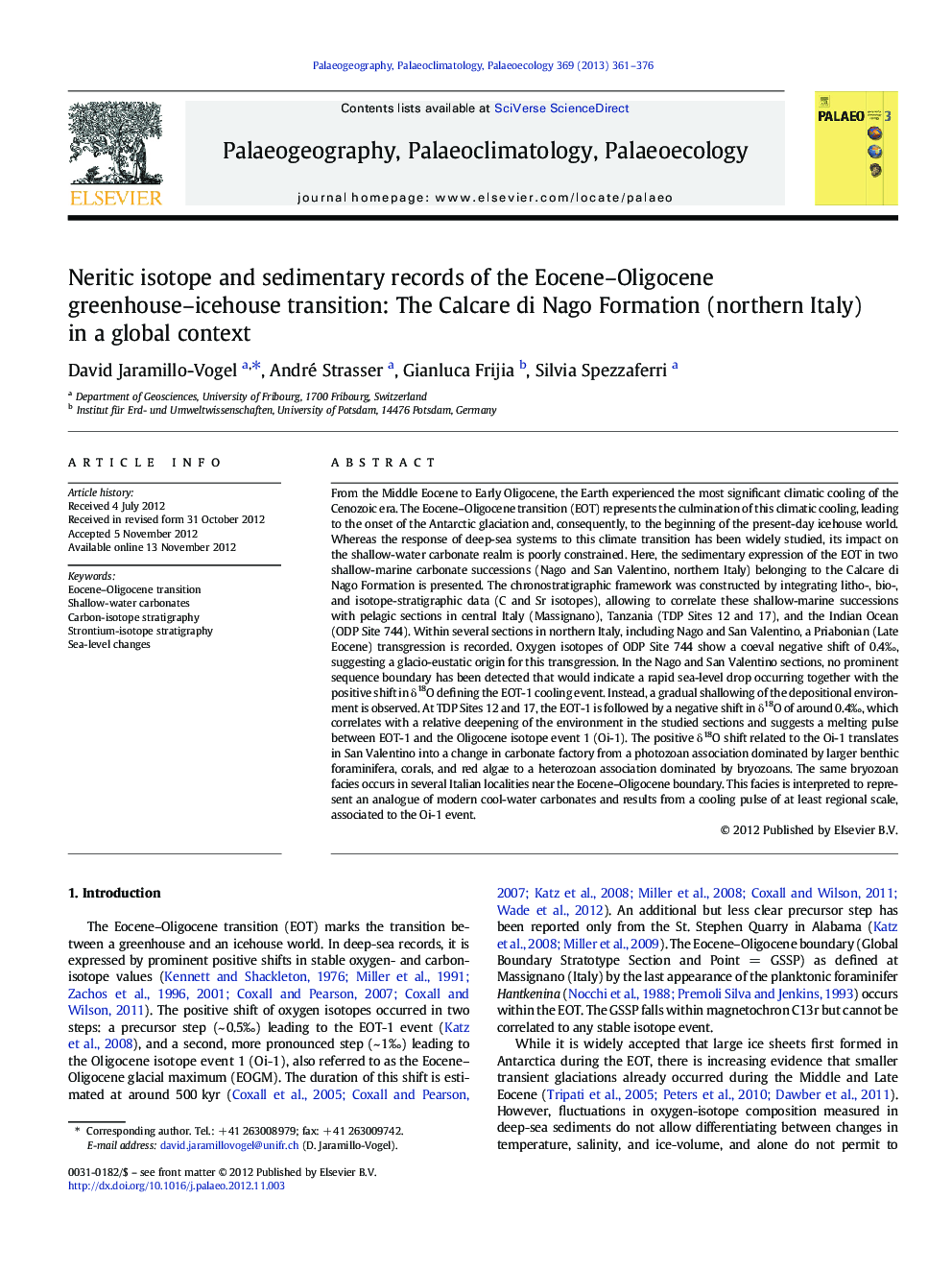| کد مقاله | کد نشریه | سال انتشار | مقاله انگلیسی | نسخه تمام متن |
|---|---|---|---|---|
| 4466709 | 1622217 | 2013 | 16 صفحه PDF | دانلود رایگان |

From the Middle Eocene to Early Oligocene, the Earth experienced the most significant climatic cooling of the Cenozoic era. The Eocene–Oligocene transition (EOT) represents the culmination of this climatic cooling, leading to the onset of the Antarctic glaciation and, consequently, to the beginning of the present-day icehouse world. Whereas the response of deep-sea systems to this climate transition has been widely studied, its impact on the shallow-water carbonate realm is poorly constrained. Here, the sedimentary expression of the EOT in two shallow-marine carbonate successions (Nago and San Valentino, northern Italy) belonging to the Calcare di Nago Formation is presented. The chronostratigraphic framework was constructed by integrating litho-, bio-, and isotope-stratigraphic data (C and Sr isotopes), allowing to correlate these shallow-marine successions with pelagic sections in central Italy (Massignano), Tanzania (TDP Sites 12 and 17), and the Indian Ocean (ODP Site 744). Within several sections in northern Italy, including Nago and San Valentino, a Priabonian (Late Eocene) transgression is recorded. Oxygen isotopes of ODP Site 744 show a coeval negative shift of 0.4‰, suggesting a glacio-eustatic origin for this transgression. In the Nago and San Valentino sections, no prominent sequence boundary has been detected that would indicate a rapid sea-level drop occurring together with the positive shift in δ18O defining the EOT-1 cooling event. Instead, a gradual shallowing of the depositional environment is observed. At TDP Sites 12 and 17, the EOT-1 is followed by a negative shift in δ18O of around 0.4‰, which correlates with a relative deepening of the environment in the studied sections and suggests a melting pulse between EOT-1 and the Oligocene isotope event 1 (Oi-1). The positive δ18O shift related to the Oi-1 translates in San Valentino into a change in carbonate factory from a photozoan association dominated by larger benthic foraminifera, corals, and red algae to a heterozoan association dominated by bryozoans. The same bryozoan facies occurs in several Italian localities near the Eocene–Oligocene boundary. This facies is interpreted to represent an analogue of modern cool-water carbonates and results from a cooling pulse of at least regional scale, associated to the Oi-1 event.
► δ13C and Sr87/Sr86-based high-resolution platform-basin correlation of EOT deposits
► Change from photozoan to heterozoan carbonate factory implies cooling at the Oi-1
► Evidence of sea-level changes related to Antarctic glaciation in the Late Eocene
Journal: Palaeogeography, Palaeoclimatology, Palaeoecology - Volume 369, 1 January 2013, Pages 361–376